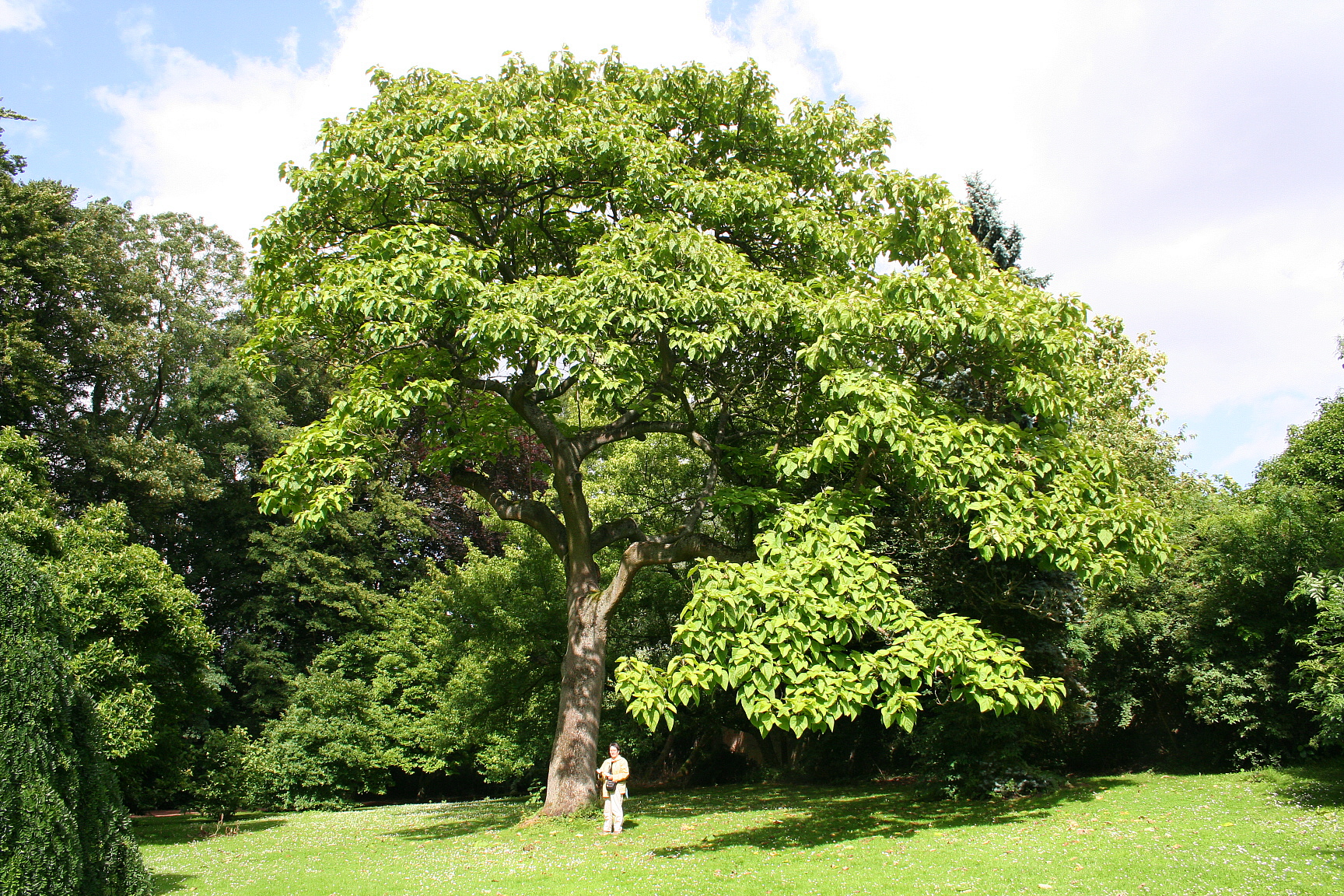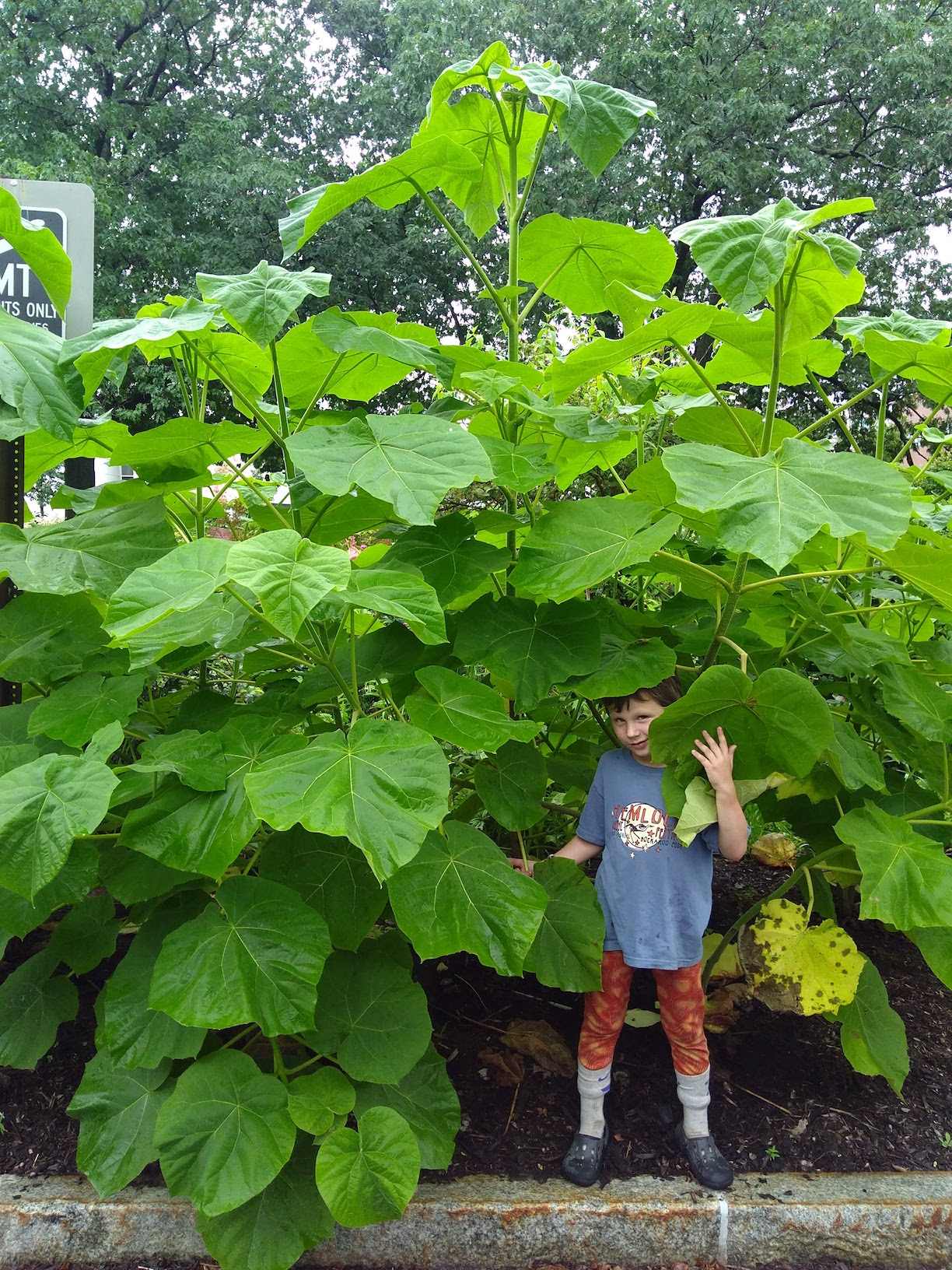Paulownia Tomentosa: The Empress Tree
Paulownia tomentosa, commonly known as the empress tree, is a deciduous tree native to central and western China. It is renowned for its rapid growth, large, heart-shaped leaves, and beautiful, fragrant flowers. The empress tree has been cultivated for centuries in Asia and has gained popularity in other parts of the world for its ornamental value and potential applications in various industries.

The empress tree is a large, fast-growing tree that can reach heights of up to 25 meters (82 feet). It has a broad, spreading crown and a deep taproot. The bark of young trees is smooth and gray, but it becomes rough and furrowed with age. The leaves of the empress tree are large, heart-shaped, and velvety to the touch. They can grow up to 30 centimeters (12 inches) long and 25 centimeters (10 inches) wide. The leaves are dark green on the upper surface and paler on the underside.
The empress tree blooms in spring, producing large, fragrant panicles of flowers. The flowers are white or lavender in color and have a tubular shape. They are followed by woody capsules that contain numerous small, winged seeds. The empress tree is a dioecious species, meaning that male and female flowers are produced on separate trees.
The empress tree is a hardy and adaptable species that can thrive in a wide range of climates. It is tolerant of drought, pollution, and poor soil conditions. However, it prefers well-drained, fertile soil and full sun to partial shade. The empress tree can be propagated from seeds, cuttings, or root suckers. It grows rapidly and can reach maturity within a few years.

The empress tree is a popular ornamental tree due to its striking appearance and fragrant flowers. It is often planted in parks, gardens, and along streets. The empress tree can provide shade, privacy, and visual interest. It is also a good choice for attracting pollinators, such as bees and butterflies.
The empress tree has potential applications in various industries. The wood of the empress tree is lightweight, strong, and durable. It is used for making furniture, flooring, musical instruments, and other products. The empress tree is also a source of biomass, which can be used for producing biofuels and other energy products. In addition, the leaves and flowers of the empress tree have medicinal properties and can be used to make traditional remedies.

The empress tree has several environmental benefits. It can help to improve air quality by absorbing pollutants. It can also help to conserve water by reducing soil erosion. The empress tree can also provide habitat for wildlife, such as birds and insects.
While the empress tree has many advantages, there are also some challenges and considerations to be aware of. The empress tree can be invasive in some areas, particularly in regions with mild climates. It can also be susceptible to pests and diseases, such as borers and cankers.
The empress tree is a beautiful and versatile tree that has much to offer. It is a valuable addition to any landscape and has potential applications in various industries. While there are some challenges associated with the empress tree, its benefits far outweigh the drawbacks. As we continue to explore the potential of this remarkable species, we can appreciate its beauty, ecological importance, and economic value.

:strip_icc()/Star-Jasmine-Bb09HQPpasXBPjzYMW55cV-cae2b5707aa74a3ba328959ad0357284.jpg?w=200&resize=200,112&ssl=1)




